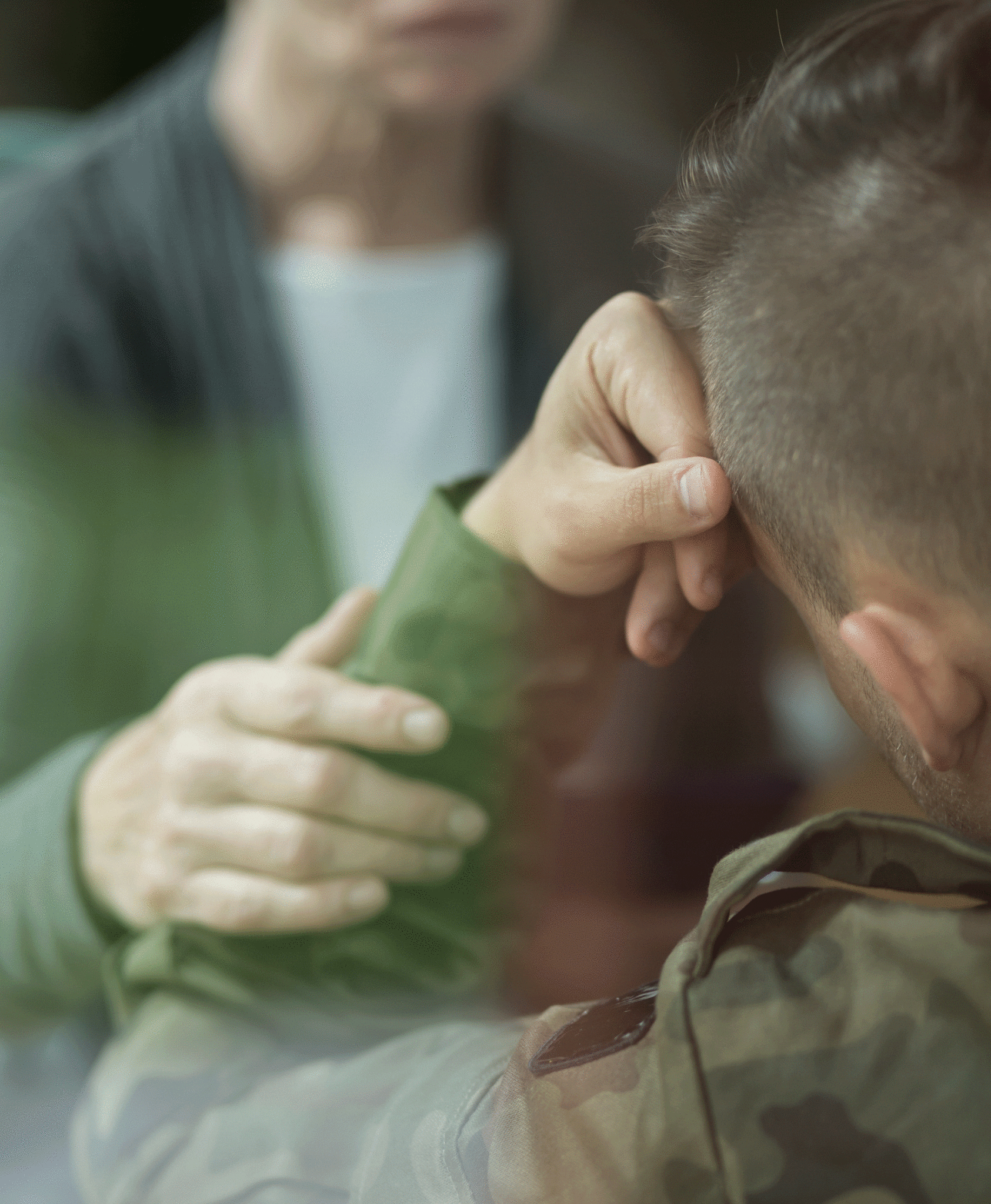Retired Staff Sgt. Geovanny Arroyo spent five years in active duty with the U.S. Army, first with the 505th Parachute Infantry Regiment (part of the 82nd Airborne Division) and then in Iraq with the 124th Infantry. When he returned to Florida, he remained with the U.S. Army Reserves until 2012. For a few years after his retirement, Arroyo says he was reckless.
“I drank a little alcohol,” the Deerfield Beach resident says. “Well, I drank a lot of alcohol. I was drinking six days a week. I was trying to readjust, but I was also feeling indestructible. I had survived a few ambushes, I survived an IED [improvised explosive device] and a lot of close calls. So to come back and die in a car accident didn’t seem like it could happen.”
Arroyo also was plagued by headaches, anxiety and sleep deprivation. He always seemed angry, irritated and annoyed. Numerous doctors told him that he was neurologically and physically in perfect condition, even though he felt otherwise.
So Arroyo turned to The 22 Project, a nonprofit organization based in Delray Beach (support22project.org), founded in 2014 by Alex Cruz and his wife, Erica, to provide medical treatment for injured veterans and active-duty service members.
The Cruzes, who own Southeast Medical Imaging in Delray Beach, began donating their imaging services after being approached by retired U.S. Marine Lt. Col. Antonio Colmenares in 2009. Colmenares had been working with veterans who had been receiving hyperbaric oxygen therapy treatments. He wanted access to brain scan images that could document the impact that the treatments were having on veterans’ brain health. The Cruzes scanned the brains of the first group that Colmenares brought to them.
“Within a few weeks, the same Gulf War veterans returned—and the images of the brain were dramatically improved after the treatments,” Alex says. “It was so encouraging.”
The treatment, commonly known as HBOT, delivers medical-grade oxygen to a person’s pulmonary system while they are inside a pressurized chamber. It is used mostly to promote healing of wounds. It is considered a holistic treatment—one that encompasses the patient physically, psychologically, socially and spiritually—when used for neurological disorders, and is not currently considered a necessary medical treatment for neurological problems.
Insurance coverage is uncommon for the treatments or the brain-imaging scans; so far, HBOT isn’t standard care for veterans with brain injuries. In fact, a study from the Department of Defense and Veterans Affairs says hyperbaric oxygen is ineffective at treating concussion-related injuries.
But after undergoing 40 treatments through the 22 Project, Arroyo couldn’t disagree more. “Within the first week and a half, I felt more energetic,” he says. “I could sleep better; the sleep was deeper. I felt that I wasn’t as irritable.”
The treatment runs for 40 days, five days a week. Brain imaging scans track the progress.
“When we saw how much it was helping the veterans, we decided to find a way to fund the treatments,” Alex says of the impetus behind The 22 Project.
The Cruzes, of Boca Raton, hope to offer full services for Gulf War veterans with traumatic brain injuries. They have partnerships with physicians and psychiatrists for evaluations, and they’ve partnered with treatment centers in South Florida to provide HBOT and other therapies that improve cognitive, psychiatric and neurological brain function. Veterans apply for a grant from The 22 Project to obtain the treatments.
“We want to be able to get this to more people,” Erica says.
Two West Point cadets, Adrian Shanahan and James Callan, canoed 2,320 miles on the Mississippi River to support The 22 Project this summer. They were determined to raise the profile of the treatment. They received almost $12,000 through their GoFundMe page—which happens to be the approximate cost of a full 40-course treatment.
So far, The 22 Project has funded treatment for 13 veterans over the past two years—but countless more are interested.
And with good reason.
“Regrettably, 22 veterans commit suicide every day,” Alex says, referring to an often-cited figure taken from a 2012 VA study, based on research between 1999 and 2010. “They served our country and protected us, and now it is our turn to serve and protect them. Our hope is to prevent other servicemen and women from being counted in this very sad statistic.
“As long as we have the funding, we’re willing to treat veterans. They deserve it.”















